"Stinkboats" and Thomas Cochrane
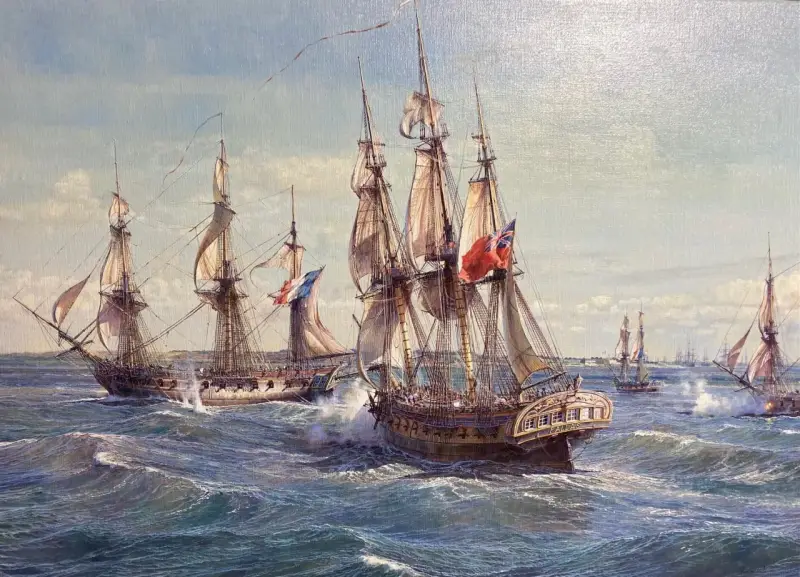
English frigate against French, Napoleonic Wars
Life of a combat officer
Brief biographical information. Lord Thomas Cochrane, 10th Earl of Dundonald was born on December 14, 1775, and in 1793 joined the navy as a midshipman on his uncle's ship. Since 1800 - captain, and in fact, it was from this time that a whole series of exploits of Cochrane began, which would later be reflected in O'Brien's books about Jack Aubrey and a series of books about Horatio Hornblower by Cecil Scott Forrester.
And everywhere, in any battle, from the battle of the brig “Speedy” with the xebec “El Gamo” to the battle at the Basque Approaches, active actions were preceded by a sober and accurate calculation aimed at minimizing the losses of one’s own personnel and inflicting as many losses as possible on the enemy.
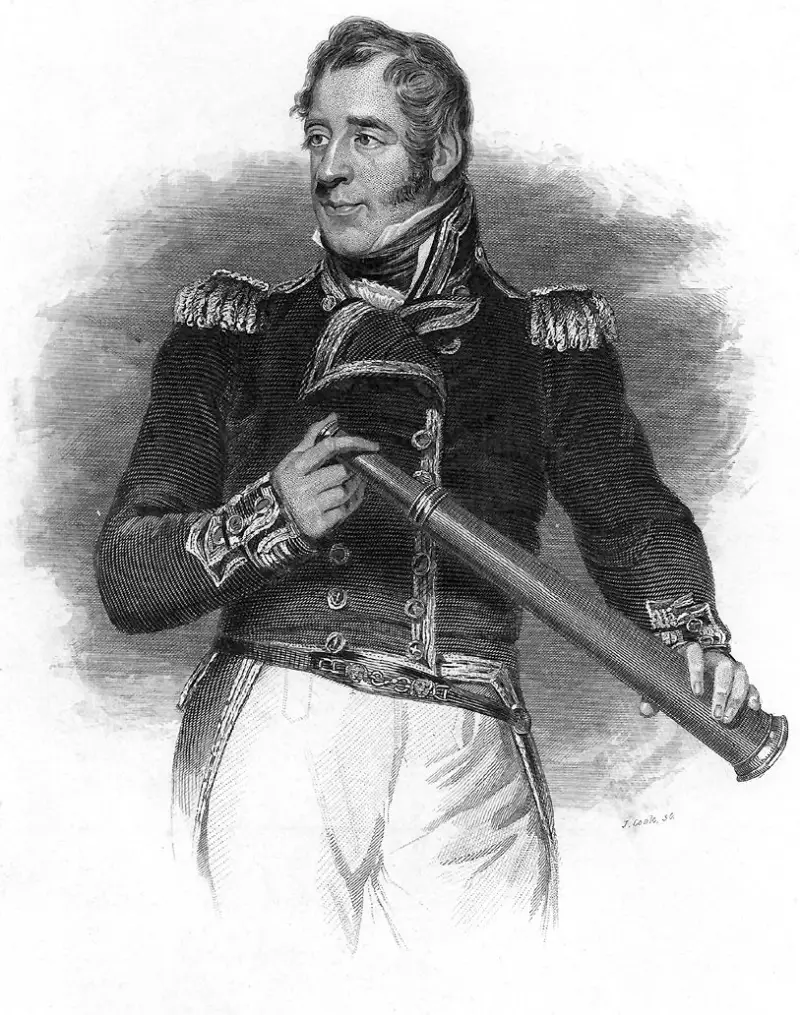
Thomas Cochrane
It was then that his famous clashes with his superiors began, which later resulted in a scandalous resignation in 1809. Consider the case of the frigate Pallas, which entered Plymouth harbor with three 5-foot gilded candlesticks on its masts, visually proving the success of Cochrane's raid. History These candlesticks are as follows - they, along with some commemorative gold platinum, were made in Mexico and sent to the Church of the Holy Apostle (patron of this city) in Spain. At the Plymouth customs, which was headed by Cochrane’s fierce enemy, Port Admiral Thomas Young, the prize team was presented with a claim that a duty had to be paid for the import of these candlesticks. Moreover, one that amounted to more than the cost of these candlesticks. Of course, Young expected Cochrane to fork over the silver and gold he had captured.
But Sir Thomas was not a fool and gave these candlesticks to the customs. Young, of course, was happy at first - he thought that they were completely made of gold, but then... there was an animal roar of rage when it turned out that they were bronze with gold.
In general, I think it is clear that Sir Thomas’s character was not sugar.
In 1814 he was accused of fraud on the stock exchange, and in 1818 he first went to Chile, where he became the godfather of the Chilean fleet, then, in 1822, he led the Brazilian fleet, from 1825 to 1828 he was commander of the Greek fleet, and in 1831 he returned to England, where he was rehabilitated and made rear admiral of the Blue Flag. They wanted to offer Cochrane command of a squadron, but he refused until his knighthood was returned to him. It was not until 1847 that Queen Victoria again made Sir Thomas a Companion of the Order of the Bath.
Cochrane and the Crimean War
In 1848, Cochrane finally led the squadron - he was appointed commander of the fleet of North America and the West Indies. In Halifax, Cochrane, always distinguished by his thirst for scientific knowledge, began mixing bitumen and coal in order to invent a new and more efficient fuel for steamships. In this way, he almost anticipated the mixed coal-oil fuel for battleships of the early XNUMXth century. One of the river steamers on his squadron was running on coal sprayed with bitumen.
At the end of March 1854, England and France declared war on Russia. And the question immediately arose - who would lead the fleet, which England traditionally planned to send to the Baltic. One of the candidates was White Flag Vice Admiral Thomas Cochrane.
Just in case, in 1854 Cochrane was already 79 years old, but no one doubted his capabilities and activity. As a result, after heated debate, the fleet heading to the Baltic was led by Vice Admiral of the Blue Flag Charles Napier. At the same time, the First Lord of the Admiralty, James Graham, directly said that he was afraid to appoint Cochrane as commander, since he would force some kind of battle and
At the same time, Graham, when appointing Napier, directly forbade him to attack Sveaborg or Kronstadt, since the First Lord was confident that the Russians would lead the fleet to a general battle.
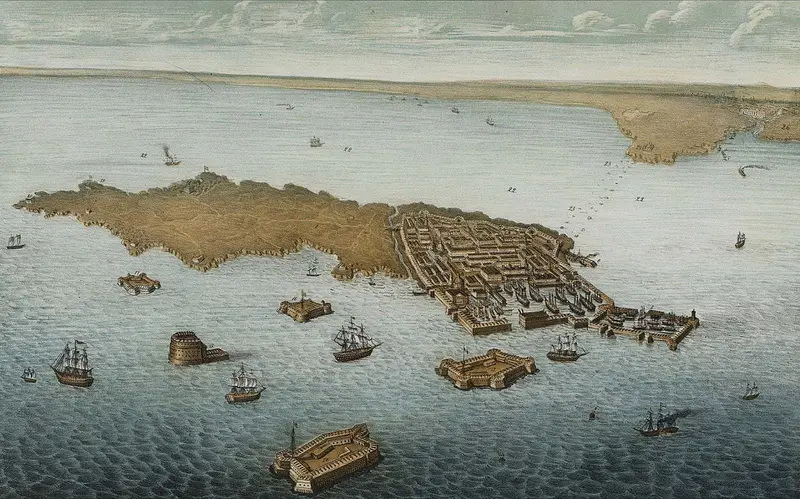
Kronstadt fortress in 1854
Cochrane was deeply upset by the refusal of his appointment, but, wanting to help England during the war, he appealed directly to Queen Victoria.
"Stink Ships"
Back in March 1812, the British Prince Regent, the future George IV, received a secret proposal from an officer of the Northern Fleet aimed at undermining the coastal military power of Emperor Napoleon Bonaparte. The author, of course, was Thomas Cochrane.
Cochrane said in his memorandum that two types of ships needed to be built - an “explosive ship” and a “stink ship.” On a vessel of the first type, all bulkheads must be removed, the internal lining will be built from logs and firmly attached to the hull. A layer of clay must be laid at the bottom, on which both conventional ammunition and Congreve missiles and scrap metal are placed. On top you still need to lay a “charge” in the form of a thick layer of gunpowder, and the carcasses of dead animals will be laid above it.
The explosive ship should then be towed the required distance to the French ships' anchorage, it should be properly heeled, and detonated. In the event of an explosion, the ship's hull will play the role of a mortar muzzle and send its deadly charge in a wide arc towards the enemy. According to Cochrane, three explosive ships would cover an area of half a square mile, and together with 6000 Congreve missiles, they would disable any squadron, even if it was in a closed roadstead.
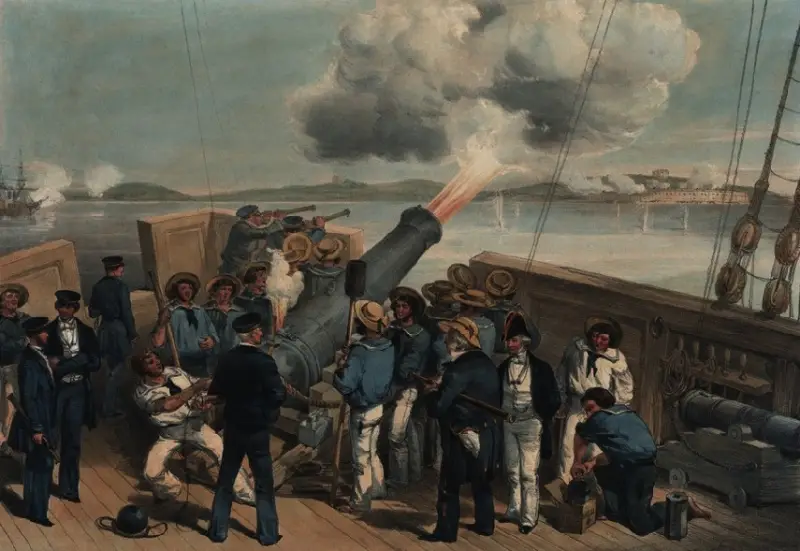
Bombardment of Bomarsund, 1854
The next step after using the "explosive ship" is to attack the ground fortifications. And here “stinker ships” will be required. As before, clay will be used to line the old hull, but the upper deck will be left intact so that it can be covered with a first layer of charcoal and then added sulfur equal to about one-fifth the volume of fuel. It was assumed that such a “stinker ship” would be lowered into the water against the shore battery, when the wind was blowing towards the shore, and then the crew would set fire to charcoal before evacuating.
The resulting clouds of “noxious fumes,” as Cochrane called them, were expected to be strong enough to weaken any resistance as the defenders fled to escape the asphyxiating gas. A quick landing of British Marines could then secure the position and clear the way for the establishment of a bridgehead. Cochrane also experimented with this technique, building on his father's affinity for chemistry, particularly the properties of coal and its byproducts, coke and coal tar.
The Prince Regent conveyed Cochrane's ideas to a group of experts that included Sir William Congreve and his son; the king's second son, Frederick Augustus (Duke of York); and two admirals: George, Lord Keith and Lord Exmouth (formerly Sir Edward Pellew). Ultimately this group of experts decided that Cochrane's unusual design had its merits, but fear of the consequences such radical devices would have on conventional warfare dampened their enthusiasm. What would happen, they wondered, if the enemy learned of this terrible new technology and turned it against Britain's defenses? The offer was rejected, and Cochrane promised never to reveal the details to the public.
Sir Thomas raised the issue of “stinker ships” again in 1853, proposing their use against Sevastopol. When he was denied command of a squadron in the Baltic, Graham wrote to Queen Victoria that
Cochrane had already addressed the issue of using “stinker ships” through the press.
Cochrane wrote - a small steam ship is loaded with barrels of tar mixed with sulfur and oil, and goes into the enemy harbor. The mixture gradually pours out into the sea through the holes during the voyage; halfway through the journey, with the steering wheel jammed, the crew leaves the boat and cocks the clock mechanism. The ship, having gone further forward, ignites the oil with potassium and explodes. The mixture of tar and sulfur produces large clouds of smoke and causes suffocation in people. And after such an attack, we simply enter Sevastopol or Kronstadt, count the Russian corpses and capture the city from the sea!
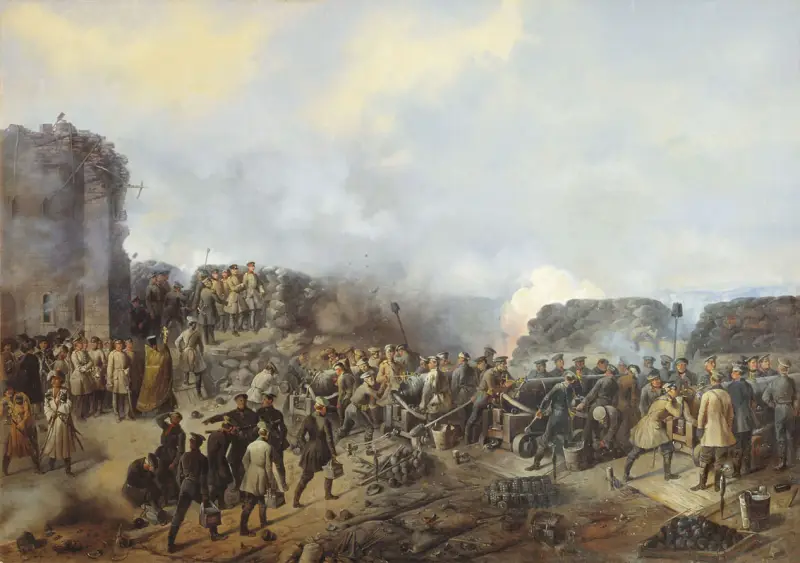
Defense of Sevastopol, 1855
By this time, Napier in the Baltic was buried in Russian fortresses and could not do anything with them, and the siege of Sevastopol was also not going well. The admirals shook their heads and said what weapon too dangerous. What if oil spills and reaches our ships? What if the wind changes and the suffocating gas covers our ships?
Conclusion
In 1855, England changed its government and Henry John Temple, Lord Palmerston, became Prime Minister. Cochrane approached the new prime minister with his proposal, and he liked the idea. But, Palmerston said, there is no money in the budget, so if you can attract private investors for your project, that’s not a question.
Cochrane once again offered the press the use of his innovative devices - just over a week of good weather in Crimea would be enough to resolve the conflict, Sir Thomas wrote. Cochrane took his appeal to Parliament, where he sought support for forcing the government to use new weapons against the Russians. Public support for the use of these weapons increased, and there were even suggestions that private funds be sought to equip the admiral with the resources needed to do the job himself.
The first experiments, carried out in May 1855, inspired optimism, and Cochrane’s plan was accepted, and “stinker ships” began to be prepared. They were ready in September 1855, but by this time Sevastopol had already fallen, and their use was not required.
All discussions of revolutionary weapons were stopped and the plans were sealed on the confidential shelves in Whitehall.
As for Thomas Cochrane, the restless sailor and admiral died in 1860, he was buried in Westminster Abbey, on the floor of the nave, right in front of the chorale. But as it turned out, he died only to be reborn in literature - because there was too much both good and bad in this man.
As for the stink-ship plans, they remained secret until 1908, when Lord Palmerston's correspondence was published. Less than a decade later, sulfur-yellow clouds of mustard gas suffocated and killed thousands in the trenches of France.
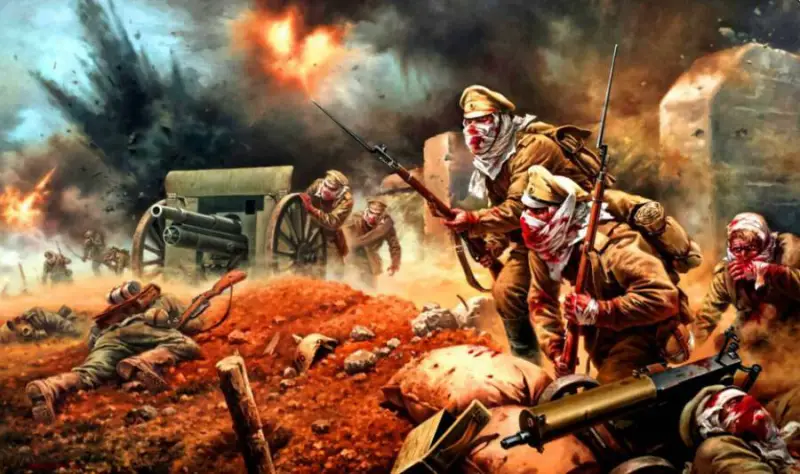
Chemical warfare, pioneered by Thomas Cochrane, which became a reality in World War I
References:
1. Harvey, Robert. "Cochrane: The Life and Exploits of a Fighting Captain" - New York: Carroll & Graf, 2000.
2. Gardiner, Robert (ed.): "Steam, Steel and Shellfire: the steam warship 1815-1905" - Conway Maritime Press, 1992.
3. Stephenson, Charles. "The Admiral's Secret Weapon: Lord Dundonald and the Origins of Chemical Warfare" - Boydell press, 2006
Information